Part 9: 1407-Osterland
Osterland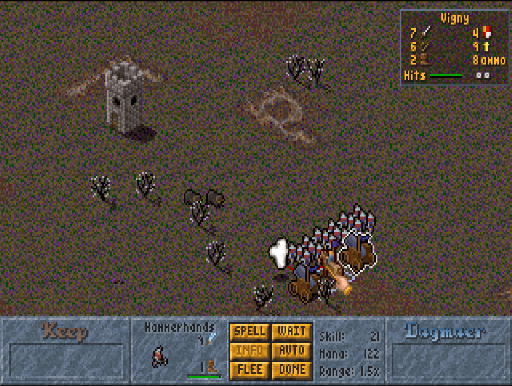
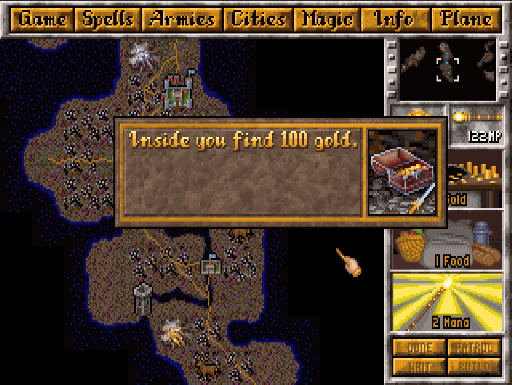
As the year opened, the Royal Army moved to clear out the remaining ruin in the Blackwater Valley, ridding it of many huge and ferocious bears beyond the size of common bears. With the creatures slain, the treasures of a lost age were gathered, and the Royal Army pulled back to Ironbridge to prepare for a final expansion that might deal with the nature node in the south.
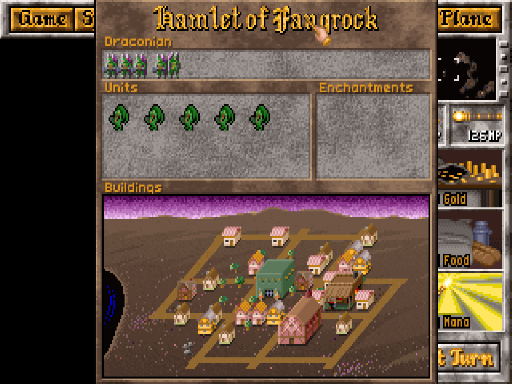
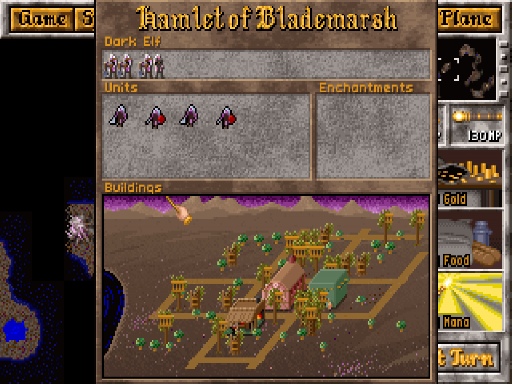
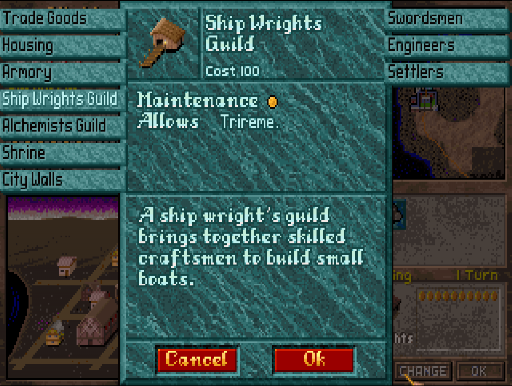
This expansion, however, was put on hold as Queen Dagmaer's puppet-spirit, having nearly crossed the world, discovered first a town of dragonkin, Fangrock, in a new land east of Dvergursheim in Thirdmonth and then a town of dark elves, Blademarsh, further south in that same land, which was dubbed Osterland. Efforts were refocused on providing greater resources to the shipwrights of Goldmarsh, allowing them to build up small oared galleys suitable to war and the transport of troops. Construction began on a Royal Navy, as a great moot Dagmaer concluded in Fifthmonth found that the people were eager to see their ancient enemies subdued. While this exploration and construction were under way, the other towns of Dvergursheim continued to prosper. By Tenthmonth, the Navy was ready to set out, with two galleys leading the way loaded with both cannon, two companies of heavy infantry, and Vigny's scouts, while the third trailed behind.
I had odd difficulty with loading the third unit of infantry on the same turn as the rest of the forces. I'm still not sure precisely what was preventing it.
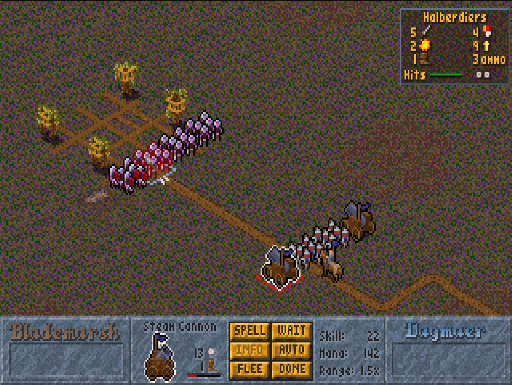
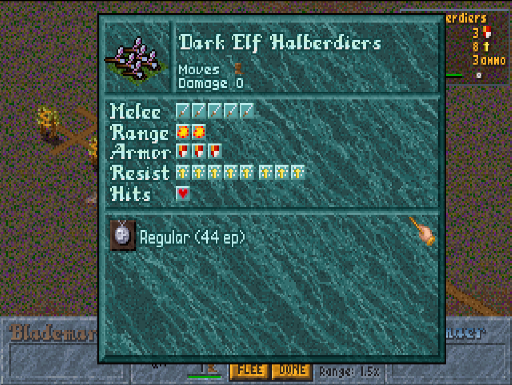
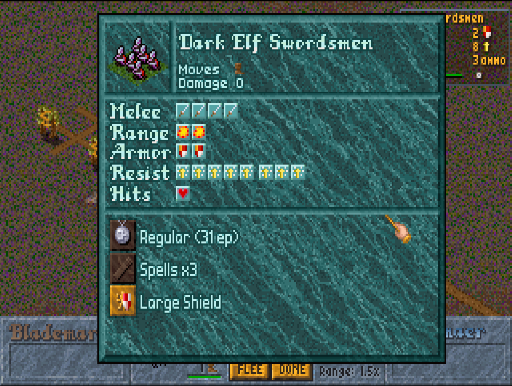
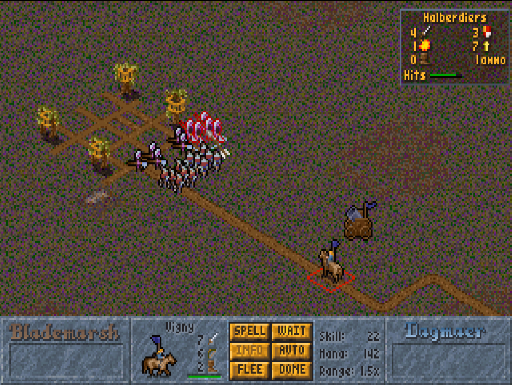
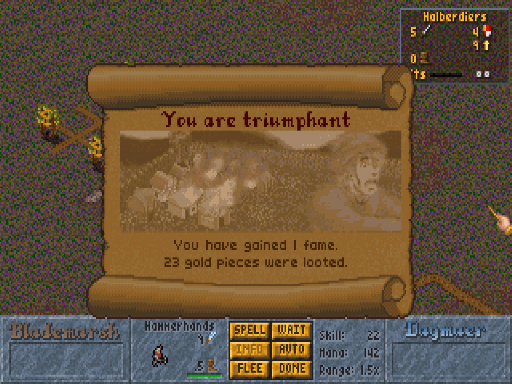
In Eleventhmonth, the Royal Army landed on the shores of Osterland and marched to the outskirts of Blademarsh. The forces of Blademarsh gathered themselves up to meet the Royal Army, and battle was joined. Cannonballs and crossbow bolts inflicted heavy casualties on the heavy infantry of Blademarsh while the Royal Army's infantry advanced, but continued bombardment by the little spells of Blademarsh's defenders eventually led to a rupture in the boiler of one of the steam cannon, resulting in a steam explosion that irreparably wrecked that cannon and led to some losses amidst its crew. This, however, allowed enough time for the Royal Infantry to reach the front lines, first crashing into and utterly annihilating the swordsmen on the right flank of the Blademarsh formation, shortly followed by the utter destruction of the remaining defenders. With the town in dwarven hands, the old Queen Azanaia and those priests pacted with the Dark Gods in the town were hunted down by the Royal Army and publically beheaded by Vigny's sword before Azanaia's palace. The thralls of Blademarsh were decreed freed and the captain of the artillery crew of the wrecked cannon, Skadi Haetadottir, left behind as a temporary governor of the town.
Dark Elves get a natural ranged magical attack for any of their troops, allowing for them to inflict some losses before anybody gets in range. As we achieved a 'major victory' here, we gain Fame, allowing our military upkeep costs to drop slightly and slightly encouraging new opportunities for heroes and so forth.
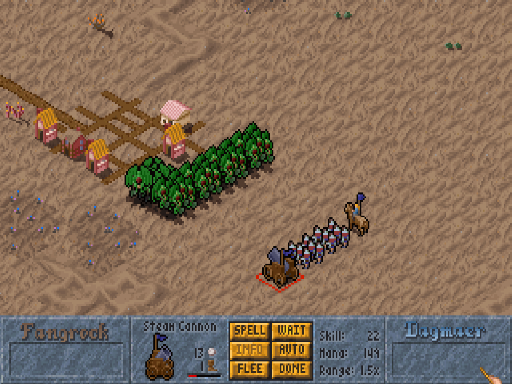
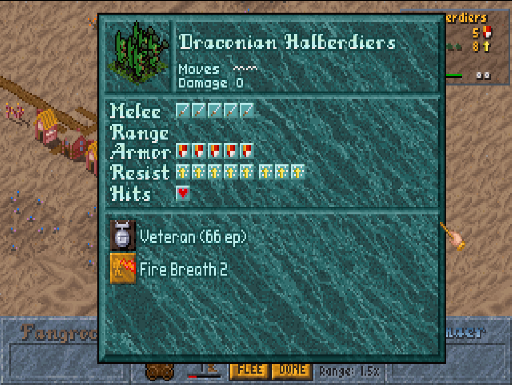
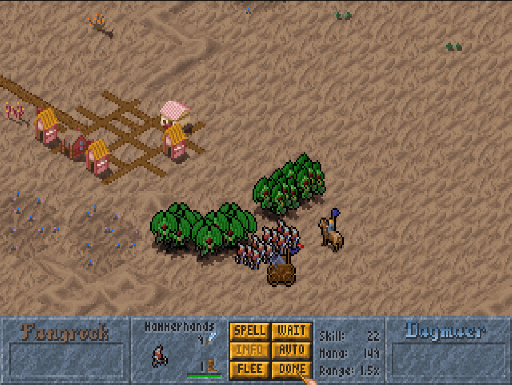

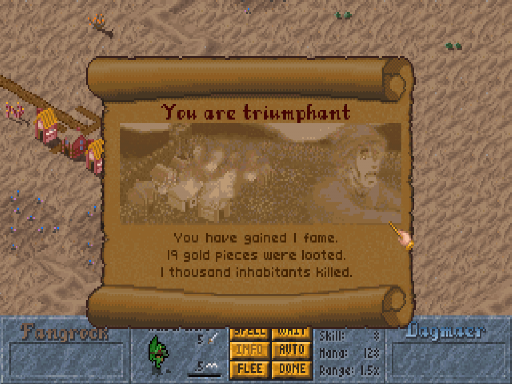
Within a month, the Royal Army faced the defenders of Fangrock, who flew swiftly to engage the Royal Army. Although the dragonkin took losses from cannon and crossbow in what little time the cannon had to engage them before they met dwarven lines, this did not save the cannon from being overwhelmed by dragonkin soldiers, wrecked, and its crew slaughtered. Once the cannon was eliminated, the dragonkin fell upon the infantry and the scouts, causing some few casualties amongst the infantry and badly injuring half the scouts before being slaughtered. In the confusion of the occupation of Fangrock, a fire was started amongst the houses of the town, burning much of it to the ground, but it was not long before the Council of Five that ruled the town presented themselves to the Royal Army and surrendered the town.
Dragonkin get +1 defense and a natural fire breath attack, which they use as an attack before starting melee combat when they initiate a melee engagement. Breath attacks are not applied when a unit is attacked by another unit. Our hammerhands are incredibly hard troops, and slaughter normal heavy infantry like nobody's business.
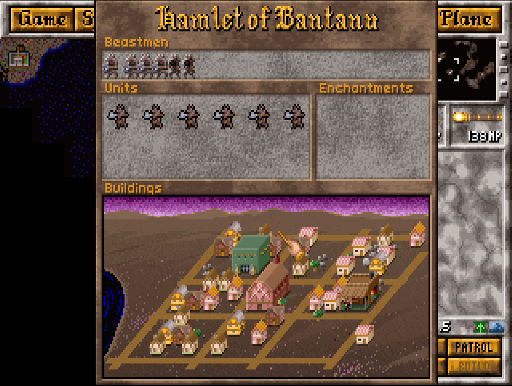
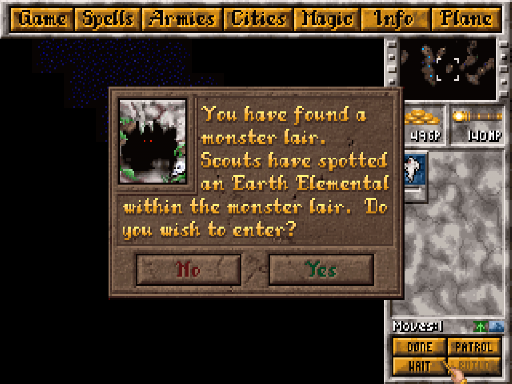
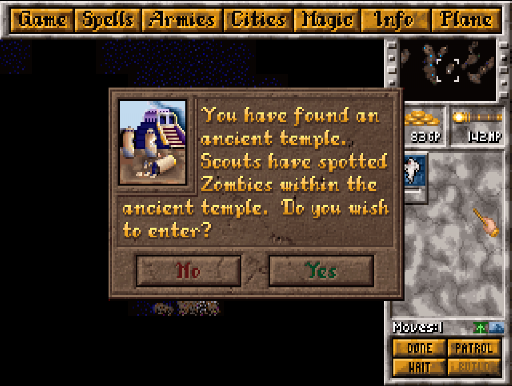
While Dvergursheim launched war against Osterland, Dagmaer's spirit that she had tasked to the exploration of the world found yet another land to the east of Dvergursheim, this one still holding a settled region peopled by the proud and fierce beastkin, and littered, as the world is, with the ruins of the lost ages that had fallen with the death and terror brought after the end of the Confederation. Bantanu, the chief town of this region, is ruled with an iron fist by King Arbax, a beastkin of uncommon size, strength, and cunning.
The Kingdom of Greater Dvergursheim as of Twelfthmonth 1407
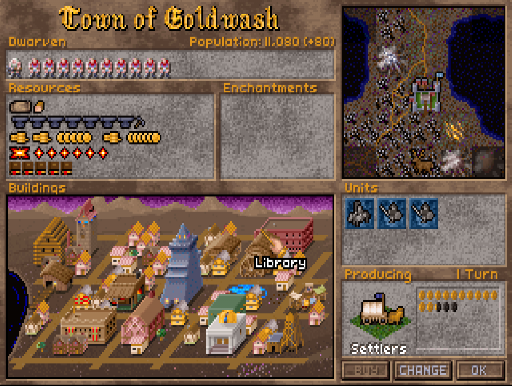
The wealthy town of Goldwash now, on top of its many crafts and its trade with the rest of Dvergursheim, serves as the chief port for shipping to and from Osterland. Some settlers have begun to gather from the districts about, seeking new homes in the remaining unsettled corners of Dvergursheim.

Over the past year, Stonegate has become, like Goldwash, a great center for savants and learning, and a place of regular correspondence for the Queen and the savants of Goldwash. Alchemical workshops and foundries are beginning to be established in the town, drawing upon the new pool of savants there.
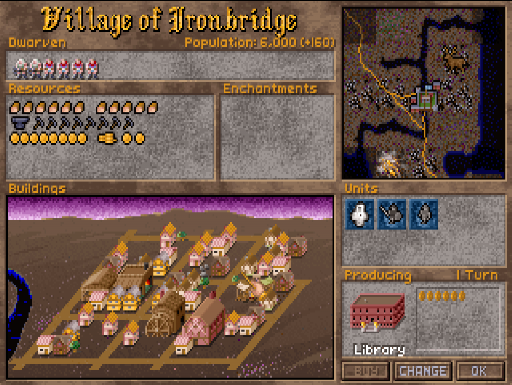
The fertile Blackwater Valley has come under more intensive cultivation, and Ironbridge now hosts the markets, slaughterhouses, smokehouses, and breweries to better handle the bounty of the valley. A program of copying those documents recovered from the ruins in the region while copying out texts from other towns is under way, letting the learning of the kingdom expand.
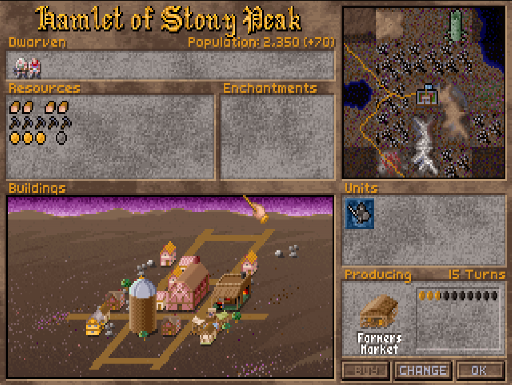
Stony Peak has continued to grow, and its shops and businesses thrive as the town grows more established. More extensive manuring and cultivation of the fields of the little farming villages of the district round about it should eventually result in better agricultural outputs.
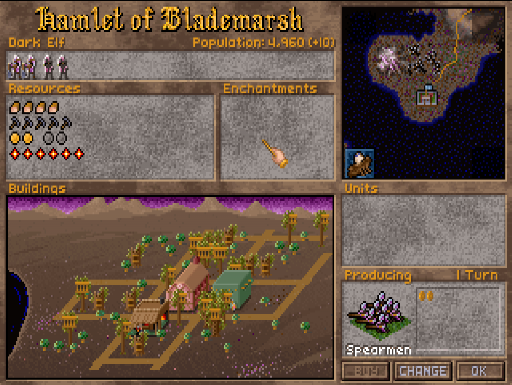
Unrest seethes just beneath the surface of Blademarsh, with all their gods save one suppressed and the thralls of the town freed to seek their own work or starve, and only careful and even-handed application of justice has prevented outright lawlessness in the town. Skadi has been rapidly mustering former thralls into a militia to patrol the town and its district, hoping to keep potential chaos under control. Between the recovery of some tiny nodules of adamantine from the mines of Mount Aethelos and the widespread abilities in the magical arts of the inhabitants of Blademarsh charging the very air of the town with magic, Queen Dagmaer has been able to take much magical power from the town. The town is poor, however, and the tax revenues from it are quite limited.
Compared to dwarves, dark elves only produce two production per worker and only produce half the gold revenues per population unit, but each population unit of dark elves produces one mana. Adamantine also produces two mana per turn from mining it. Now that we have encountered other races, I will say I misreported the base output of special mineral resources earlier. Gold is worth only 3 gold per turn, silver only worth 2 gold per turn, and iron is only worth a 5% discount on unit production costs. Dwarves, however, double the value of all mines, as they are excellent miners.
The hostility between dwarves and dark elves results in 30% extra unrest in dark elven towns we rule over and beyond the unrest from taxes, for a total unrest of 40%. We should get rebels at 3/5/8/10/13/15/18/20/23/25 population in dark elven towns. So far, Just Cause is keeping things under control, and we are building a garrison to help deal with future unrest.
For every race but dwarves, their base militia unit that draws no wages is the spearman, which is significantly weaker than swordsmen. Swordsmen for other races are professionals that draw pay- only dwarves have the general populace able to outfit themselves that well when drawn up for militia service.
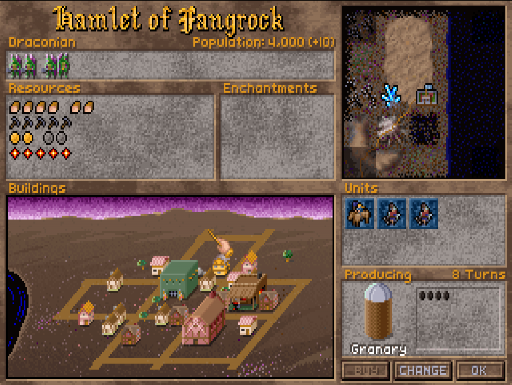
The blankly uncooperative behavior of much of the town of Fangrock has forced the dwarven occupiers to rely on the Council of Five to administer the city under the occupiers' supervision. Although the Council makes a great show of cooperating with their conquerers, their intrigues and plots continue beneath the surface, and they must be watched closely lest they betray the crown. The caste system of the dragonkin continues unchanged, with only some moderation of the treatment of lower castes able to be achieved by dwarven reforms. Like Blademarsh, the town is poor and unproductive compared to the towns of Dvergursheim itself. Still, the work of dragonkin savants and the harvesting of the strange and magical quork crystals of the Desert of Fangs provide a source of power to Queen Dagmaer. With peace established and the Battle Hills no longer too dangerous for dragonkin herders to work, a program of improving the agriculture of the region has begun under the supervision of the Council of Five.
Dragonkin also produce only two production per worker population unit and half taxes- these are in fact the default outputs of production and gold for most races, with dwarven skill at commerce. the trades, artisanship being an outlier. One mana is produced per every two dragonkin population units, and quork crystals can be mined for 3 mana per turn.
Dragonkin under dwarven rule get 20% extra unrest, for a total of 30% unrest. Rebels appear in our dragonkin towns at 4/7/10/14/17/20/24 population.
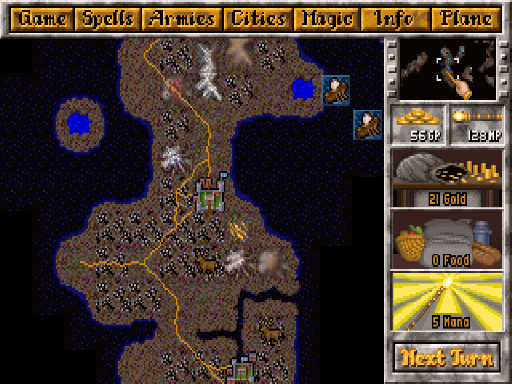
Goldwash Bay has been fully charted by dwarven explorers, and the finances of the crown remain healthy despite the new expenses involved in the Royal Navy and the administration of Osterland, at least in part because of the dissolution of the artillery companies of the Royal Army for the moment. The marks of settlement stretch further across the Blackwater Valley of Dvergursheim.
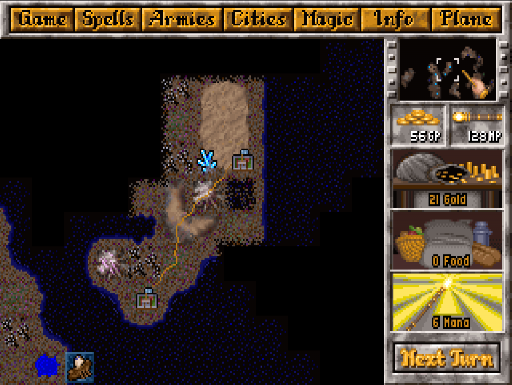
With the addition of Osterland to the kingdom, the kingdom has been formally renamed from the Kingdom of Dvergursheim to the Kingdom of Greater Dvergursheim. South of the Battle Hills between Blademarsh and Fangrock, Osterland is a pleasant warm land of rich fields, small forests, and the looming presence of Mount Aethelos. North of the Battle Hills, the eastern coast is hot and harsh, with what rainfall falls on the northern slopes of the Battle Hills and on Mount Spire's eastern face being trapped in a stinking mire south of the Desert of Fangs. Dragonkin farming villages nestle at the southern and western edges of the district about Fangrock, taking advantage of what good land can be found. The ancient dwarven road on Osterland links the two towns, with a mighty tunnel bored through the shoulders of Mount Spire between the Battle Hills and the Desert of Fangs.

The new land further east of Dvergursheim is a perilous and varied land, with mountains, a great river watering a fertile plain, a great desert, and some intriguing mineral wealth that might be exploited. The district about Bantanu is a pleasant land, with Bantanu set on a region of hills and downs overlooking green fields and forests rich with game for any hunter.
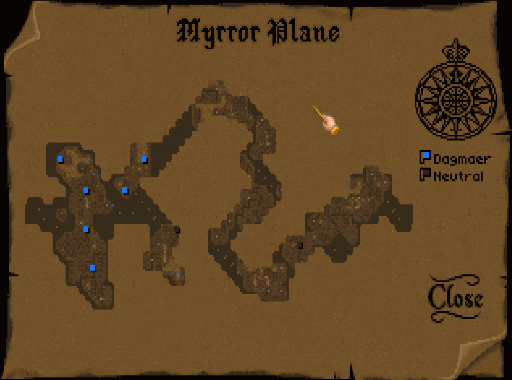
The edges of the unknown are being slowly pushed back. Perhaps sometime soon knowledge of the whole of Myrror may be restored.
1407 dwindles, and the Kingdom of Greater Dvergursheim now has proven its might against the realms of Osterland. Myrror seems filled with many opportunities that might be seized by the bold and the wise. What shall 1408 bring?